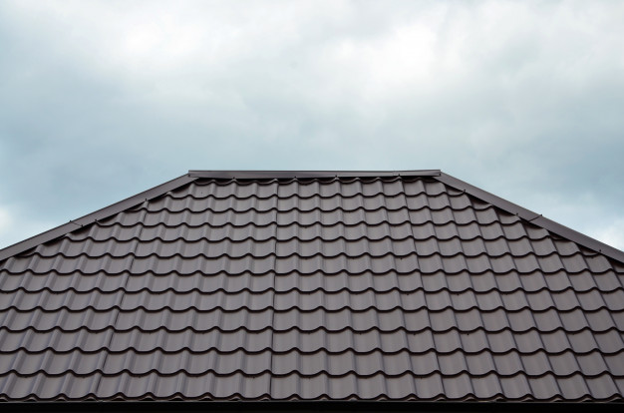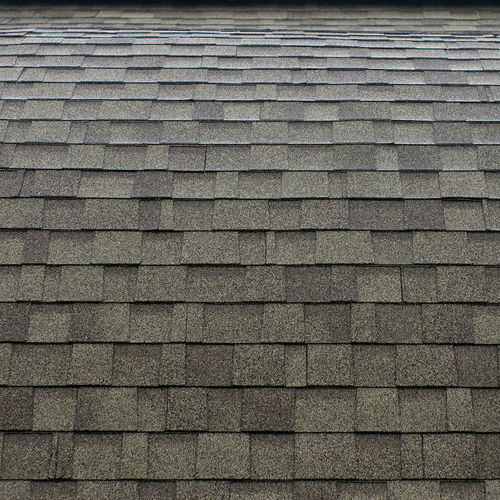
The slope of a roof describes its angle. A steep slope usually has a slope greater than one third, but it could be even steeper. A typical steep-sloped roofing will have a pitch between nine and twelve inches. Additional fasteners may be required. For more information about roof slopes, read on. These are just a few.
The International Residential Code specifies requirements for different types and styles. These guidelines also include the minimum roof slope requirements for different types. The table below lists the minimum slope for each type. This table comes from the model International Building Code, which is the basis of nearly every building code in the United States. See our article on how to determine roof slopes for more information about different types of roofing systems.

For the best aesthetic appeal, your roof's slope should not exceed 2:12. You can alter the slope depending on your local climate. The steeper the pitch, the lower the angle. For example, a roof with a sloped four inch would require a minimum roof pitch of two and a half inches. For proper insulation, a 6-inch-sloped house will need a steeper pitch.
In general, low-pitch roofs are the best choice for residential buildings. They are easy-to-install and provide great protection from ultraviolet rays. However, they are more likely to leak and require frequent inspections. If the roof slope is too steep, it is possible to repair it. Medium-sloped roofs are the best for residential homes. There are two types flat-sloped roofs, high-sloped as well as low-sloped.
There are two basic types: high pitch and low-slope roofs. The latter type is more beneficial for your home as it will shed water faster and snow less efficiently. A steep-pitch roof will not work well for covered porches. For the remainder of your roof, you should choose a more steep-pitch roof.

Besides low-pitch roofs, high-pitched ones can also develop leaks. These are due to temperature variations, sunlight exposure and a gradual loss of wood structure. Therefore, it is important to perform a thorough inspection on low-pitch or high-pitch roofs every year. You should not only fix leaks but also check the drainage system. Every year, you should inspect your roof drainage system.
Your home's slope will determine the type of roof that you choose. If your roof slope is steep, you will need a sloped roof. While it will be more cost-effective, it will also be more efficient. You should use a lower pitch roof for low-sloped roofing systems. There are several options for steep-sloped roofing systems.
FAQ
Is it better to hire either a general or subcontractor?
It is more expensive to hire a general contractor than to subcontract. General contractors usually have many employees. This means that they charge their clients much more for labor. Subcontractors, on the contrary, hire one employee and charge less per hour.
How long does it take for a home to be renovated?
It depends on how large the project is, and how long you spend on it each day. An average homeowner will spend three to six hours a week on the project.
Are permits necessary to renovate my property?
Yes. Permits will be required for any home-improvement project. A building permit and plumbing permit are required in most cases. A zoning permit is also required depending on the type and extent of work you are performing.
How much does it cost to renovate a house?
Renovations are usually between $5,000 and $50,000. Most homeowners spend between $10,000-$20,000 on renovations.
Can I rent a dumpster?
Yes, you can rent a dumpster to help you dispose of debris after completing your home renovation. Renting a dumpster will help you keep your yard clear of debris and trash.
Statistics
- It is advisable, however, to have a contingency of 10–20 per cent to allow for the unexpected expenses that can arise when renovating older homes. (realhomes.com)
- According to the National Association of the Remodeling Industry's 2019 remodeling impact report , realtors estimate that homeowners can recover 59% of the cost of a complete kitchen renovation if they sell their home. (bhg.com)
- They'll usually lend up to 90% of your home's "as-completed" value, but no more than $424,100 in most locales or $636,150 in high-cost areas. (kiplinger.com)
- A final payment of, say, 5% to 10% will be due when the space is livable and usable (your contract probably will say "substantial completion"). (kiplinger.com)
- The average fixed rate for a home-equity loan was recently 5.27%, and the average variable rate for a HELOC was 5.49%, according to Bankrate.com. (kiplinger.com)
External Links
How To
How to Renovate an Old House?
It is important to first decide the type of renovation you wish to do. This could mean anything from replacing your kitchen appliance to completely redesigning the house.
Once you've decided what sort of renovation you want to carry out, then you need to think about how much money you have available to spend. You might discover that you don't have enough funds for the entire project. If this is the case, then you need to make some tough decisions about which areas of the house you can afford to improve and which ones you can't.
Before you make the decision to carry out renovations, there are some things that you should do. The first thing to do is ensure you get the necessary permits. You should check whether you are required to have planning permission to perform certain types of work. To add extensions to your home or make other changes, you might need building consent.
Before you begin to renovate your house, make sure to check with the local authority to confirm that they do not require additional permits. Check whether you need planning permission to renovate any of the parts of your house. For major projects like a new roof installation, your insurance provider may need to be contacted to confirm that you have adequate coverage.
Next is choosing the right tools for the job. There are many different options available, so it's important to take your time to research them thoroughly. Some of the most common items that people use during their renovation projects include paint, wallpaper paste, flooring, tiles, carpets, insulation, fencing, doors, windows, lighting, plumbing, heating systems, electrical wiring, plasterboard, timber, concrete, bricks, tiling, mirrors, sinks, taps, toilets, washing machines, ovens, refrigerators, microwaves, dishwashers, vacuum cleaners, carpet cleaning equipment, air conditioning units, fireplaces, chimneys, and even garden furniture!
You should consider the product's overall quality when shopping for these items. Quality products last longer than cheaper products and are less expensive. You should only buy what you need when purchasing anything. Don't buy too many because you could end up wasting precious resources and having to discard large quantities of material. Instead, purchase only what you need.
Finally, once you've chosen the right materials for the job, you need to figure out where you'll store them while you're working on the property. You might need storage space if you are renovating large areas of your house. Alternatively, you could ask family members or friends to help you move all the items around.